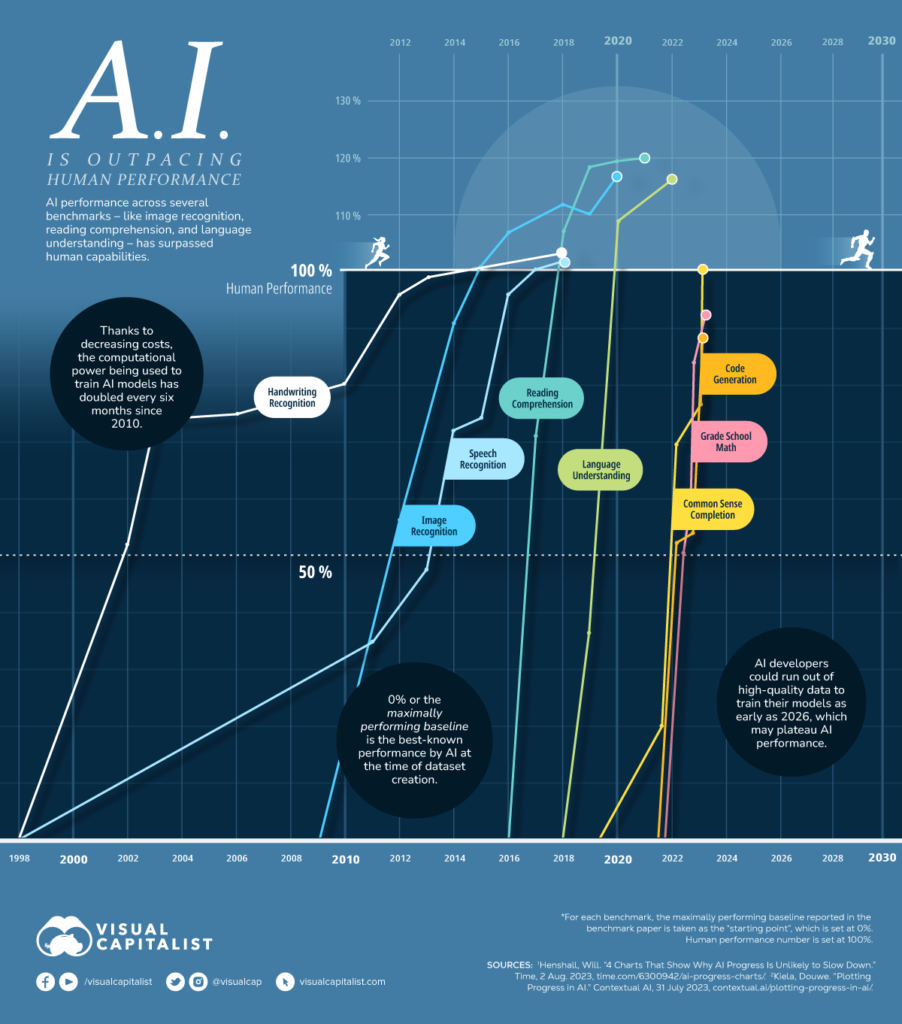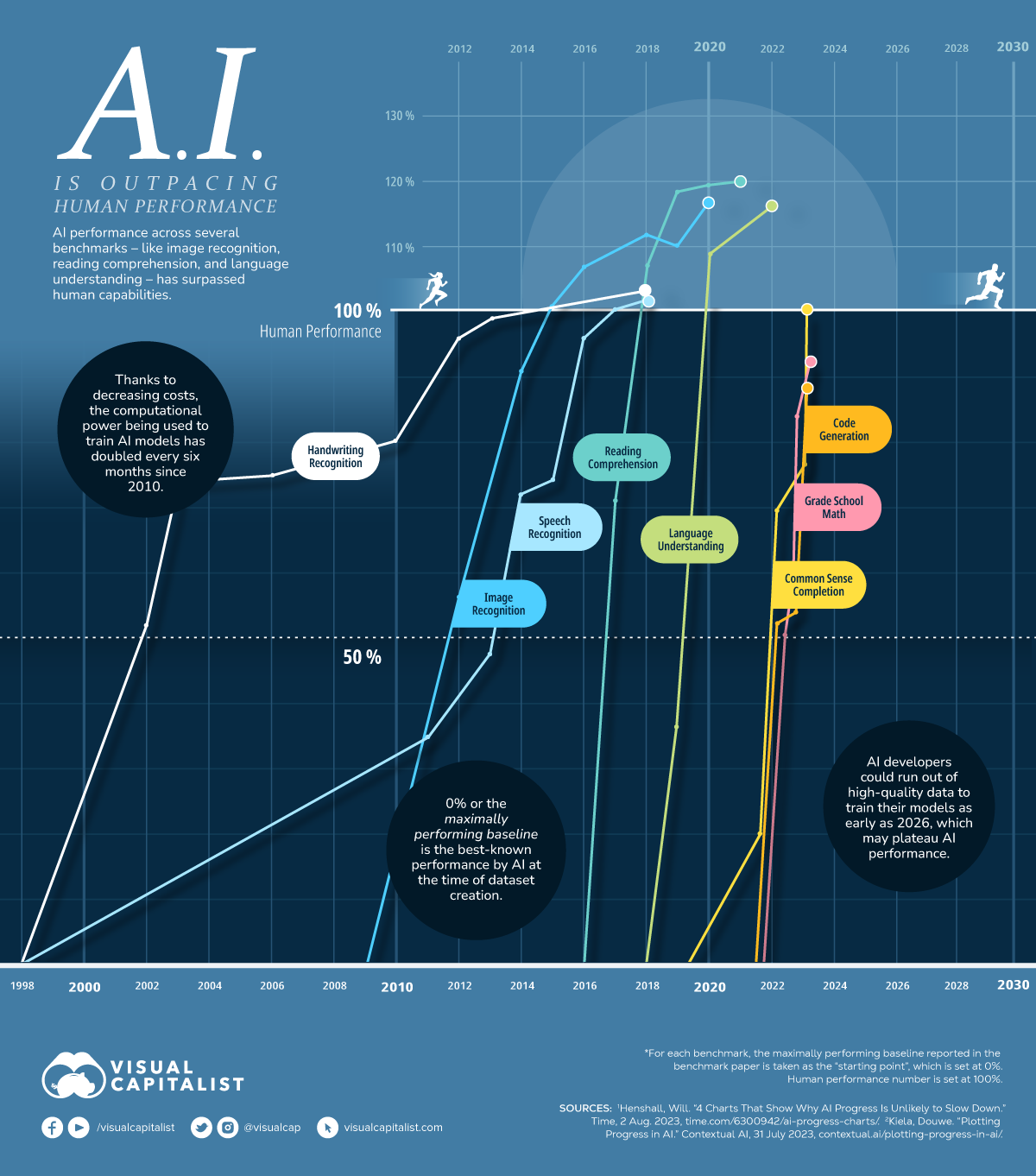The rise of ChatGPT has sparked a significant debate regarding the capabilities of artificial intelligence compared to human intelligence. This debate is particularly relevant in areas where humans have traditionally excelled, such as understanding text, deciphering auditory information, and identifying visual elements.

To evaluate the proficiency of AI models, data from Contextual AI is used to depict the rapid progress of AI models compared to established database benchmarks. Each database is designed with specific proficiencies in mind, such as recognizing handwriting, understanding linguistic nuances, or comprehending textual content.
The continuum between 0% (the peak of AI performance at the time of dataset curation) and 100% (the peak of human performance) allows us to visualize the trajectory of AI models’ advancements on each dataset. As the curve ascends, AI models progressively narrow the gap with human achievements.
The table provided highlights the skills in which AI models have matched human competence, along with the databases used for evaluation.
These skills include handwriting recognition, speech recognition, image recognition, reading comprehension, language understanding, common sense completion, and grade school math and code generation (for which no specific databases have been mentioned).

Notably, the graph demonstrates the significant progress made since 2010. Many of the databases mentioned, such as SQuAD, GLUE, and HellaSwag, were only developed after 2015. To address the issue of benchmark obsolescence, new databases are continuously augmented with relevant and up-to-date data points.
While AI models have yet to achieve human proficiency in certain areas, such as primary school mathematics and code synthesis, they are on track to conquer these as well.
The remarkable advancement of AI’s capabilities in recent years can be attributed to several factors, including advancements in computational power, the availability of vast amounts of data, and improved algorithms.
Modern AI models are faster, can process larger datasets, and have been optimized for better efficiency compared to their counterparts from a decade ago.
As a result, it is not surprising that AI language models often match or surpass human benchmarks on standardized assessments. However, these models often struggle when faced with real-world challenges, highlighting the need for further development.
While further advancements in computation and algorithms are expected in the coming years, one potential obstacle to AI’s progress may be the lack of data available for refining the models.



